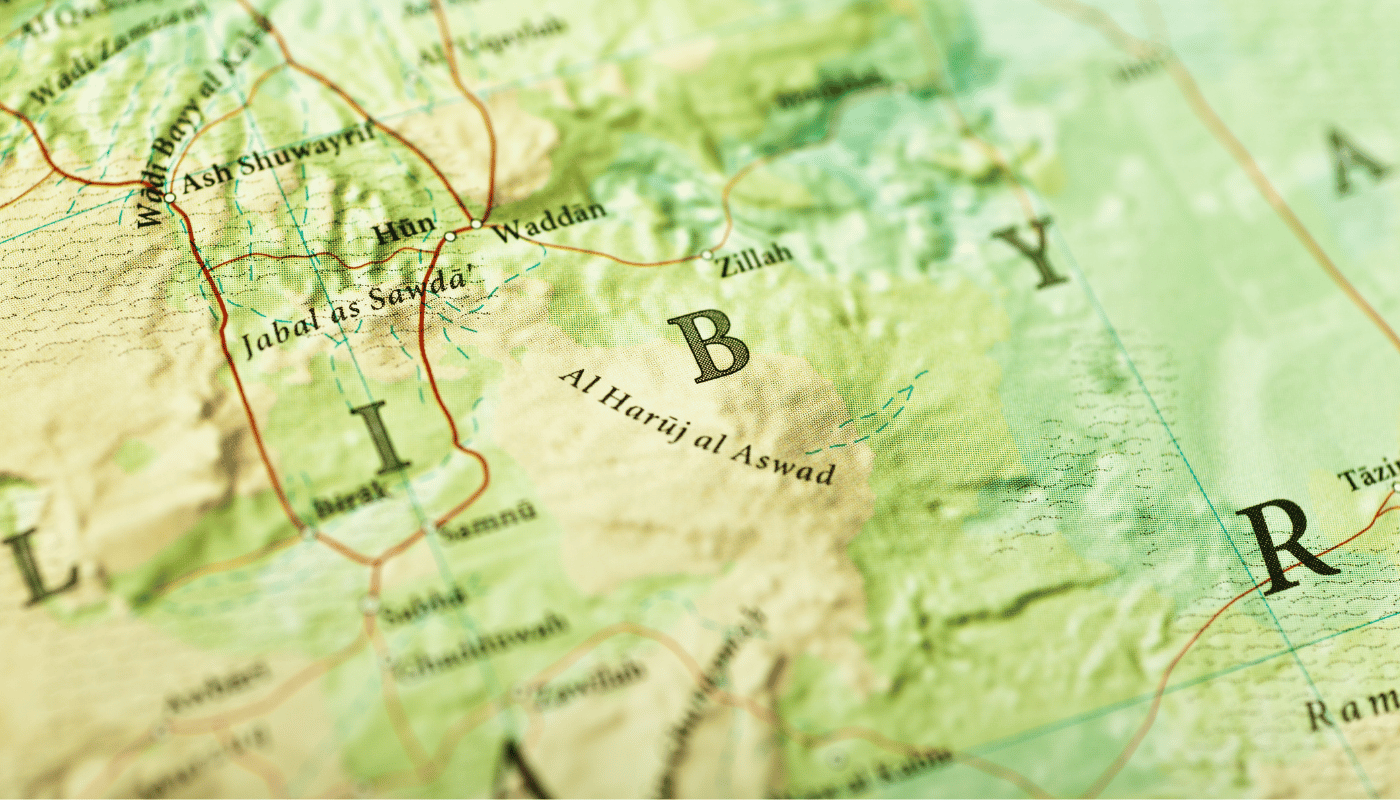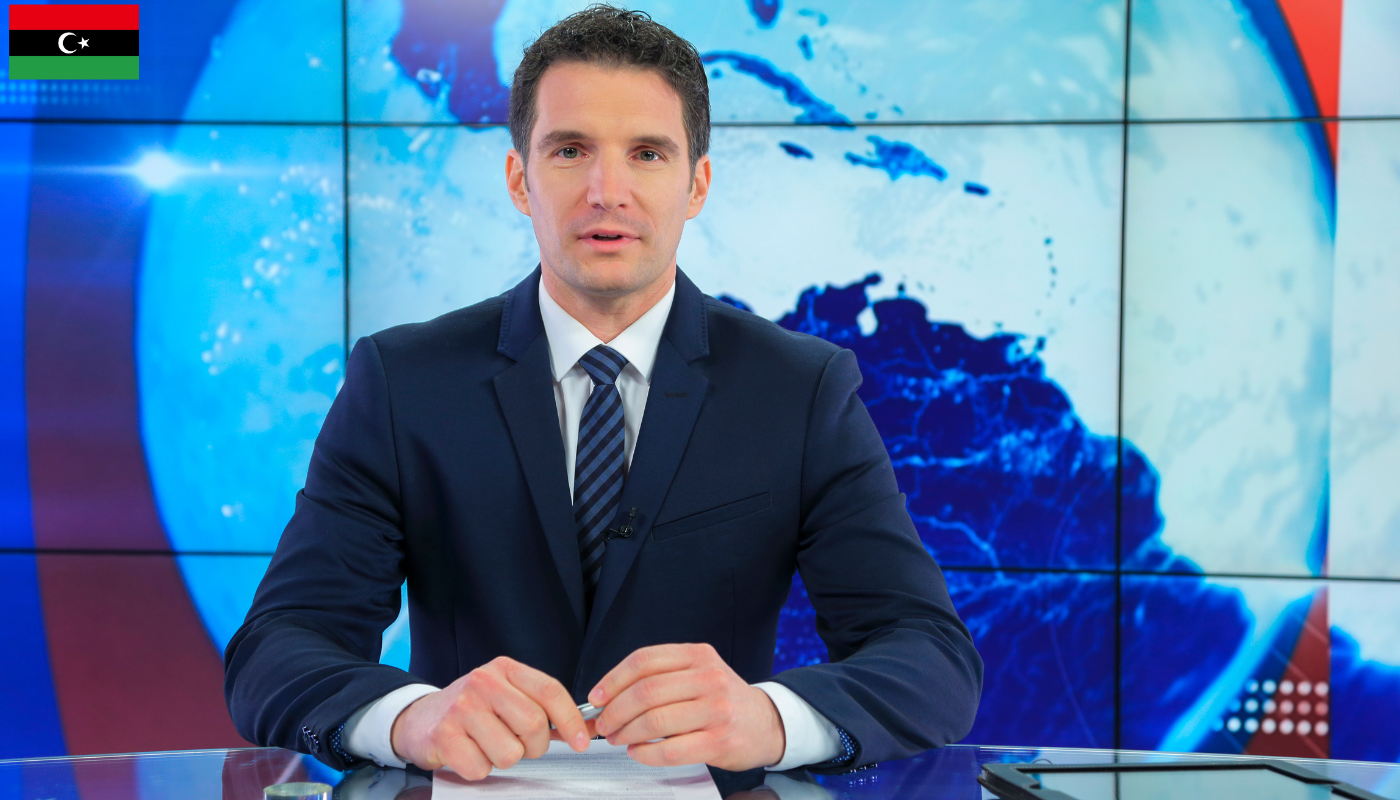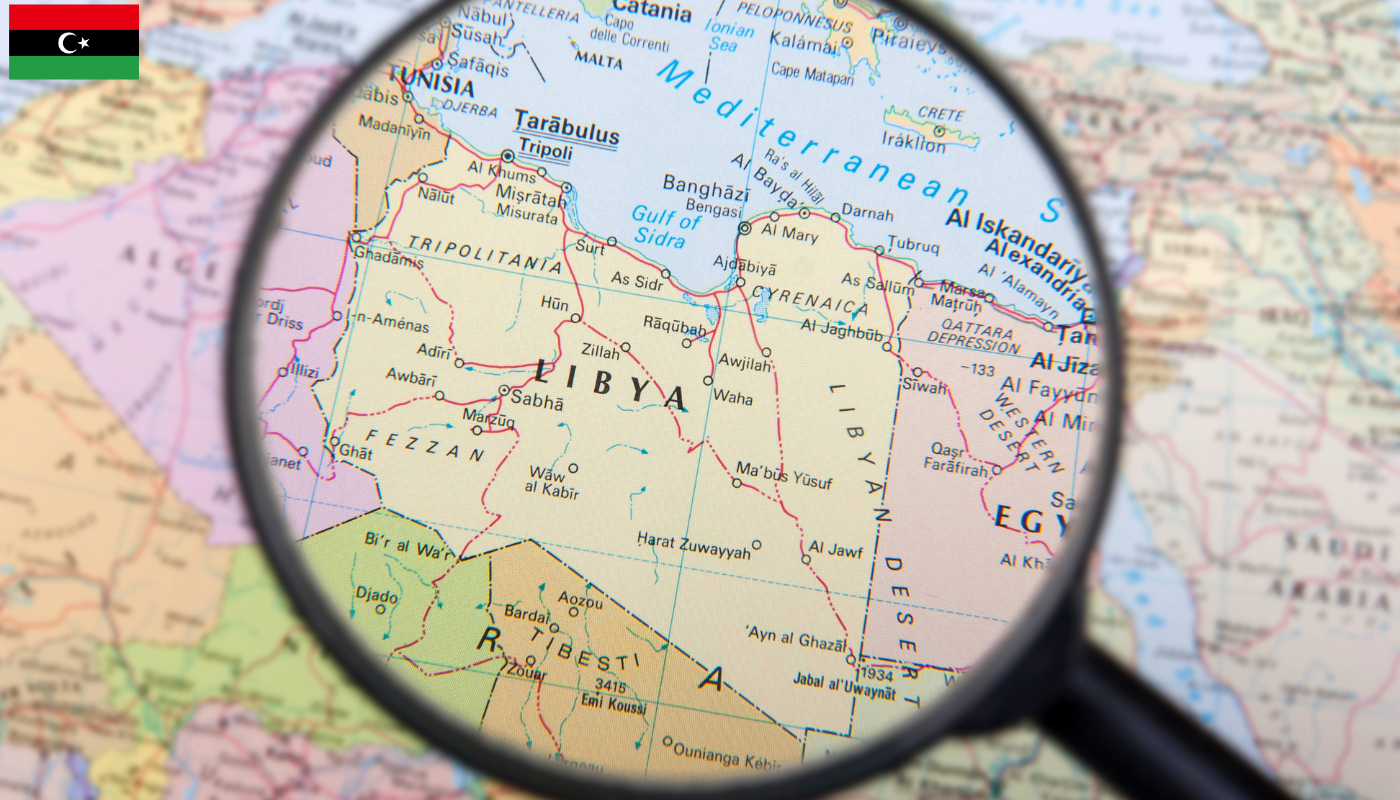Have you ever wondered about the linguistic tapestry of Libya, a country with a rich history at the crossroads of civilizations? Libya’s language landscape is as diverse and captivating as its storied past, offering a fascinating blend of sounds and scripts. In this exploration, we delve into the linguistic heartbeat of Libya, uncovering the languages that pulse through its cities, deserts, and oases. Prepare to be intrigued by the linguistic diversity that thrives within this North African nation.
Official Language of Libya
The linguistic landscape of Libya is predominantly shaped by its official language, Arabic. This reflects not only the nation’s cultural and historical identity but also its alignment with the Arab world. Arabic in Libya is not monolithic; it encompasses a variety of dialects, with Libyan Arabic being the most widely spoken among the populace. This dialect is distinct from Modern Standard Arabic, the form used in formal contexts, media, and education, showcasing the linguistic diversity within the nation itself.
Furthermore, the use of Arabic in Libya extends beyond everyday communication. It is deeply ingrained in the country’s legal system, governance, and educational frameworks, signifying its importance at both the public and private levels. Despite the prevalence of Arabic, Libya’s linguistic landscape is also dotted with minority languages such as Berber (Amazigh), particularly in the regions of Zuwara and the Nafusa mountains. These languages highlight the cultural and linguistic diversity that exists beneath the surface of the official language narrative.
Additionally, English and Italian serve as significant foreign languages within Libya, a legacy of colonial history and recent educational policies aiming to promote global connectivity. The presence of these languages points to Libya’s complex interactions with the external world, balancing between its rich Arab heritage and influences from its Mediterranean neighbors.
Arabic Dialects and Their Influence in Libya
The mosaic of Arabic dialects within Libya not only illustrates the regional diversity but also influences social interactions, trade, and cultural exchanges among different Libyan communities. Understanding these dialects provides deeper insights into the Libyan identity and its multifaceted societal fabric.
Exploring the Role of Libyan Arabic
Libyan Arabic acts as a unifying linguistic thread among the citizens, fostering a sense of national identity and community. Its usage in casual conversation, local media, and cultural expressions showcases its pivotal role in the everyday life of Libyans, bridging diverse communities across the nation.
- Modern Standard Arabic: The formal language of education and media.
- Libyan Arabic: The most widely spoken dialect across different regions of Libya.
- Berber (Amazigh) Languages: Indigenous languages spoken in specific areas, contributing to the cultural diversity.
- English: Increasingly used in education and business as a global lingua franca.
- Italian: Remnants of colonial history, still evident in certain cultural and social spheres.
The Linguistic Diversity of Libya
Libya, a country with a rich tapestry of history and culture, is home to a myriad of languages that reflect its complex heritage and the influence of various civilizations over the centuries. At the heart of Libya’s linguistic landscape is Arabic, the official language and the medium of most daily communication, education, and government affairs. Modern Standard Arabic is used in formal contexts, while the Libyan Arabic dialect, with its unique expressions and vocabulary, dominates informal conversations among the locals.
Beyond Arabic, Libya’s linguistic mosaic includes languages of smaller ethnic and cultural groups. Berber languages, particularly Tamazight, are spoken by the Berber communities in the regions of Nafusa Mountains, Zuwara, and other enclaves. Although not officially recognized, these languages are an integral part of Libya’s cultural heritage. Additionally, the presence of Tebugu and Tuareg languages in certain areas highlights the diversity even further, contributing to the rich linguistic tapestry of the country.
With the influx of immigrants and foreign workers, languages such as English, Italian, and French have also found a place in Libya, primarily in educational institutions, businesses, and among expatriate communities. These languages serve as bridges connecting Libya with the global community, facilitating international business, education, and diplomacy.
Preserving Libya’s Linguistic Heritage
Challenges and Opportunities in Language Preservation
In the face of globalization and the dominance of major world languages, preserving the linguistic diversity of Libya presents both challenges and opportunities. Initiatives to document and revitalize endangered languages, such as the Berber languages, are crucial for maintaining cultural identity and heritage. The digital era offers new avenues for language preservation, through online dictionaries, language learning apps, and social media platforms, ensuring that these languages remain vibrant and accessible to future generations.
| Language | Region | Speakers |
|---|---|---|
| Arabic | Nationwide | Majority |
| Berber (Tamazight) | Nafusa Mountains, Zuwara | Minority |
| Tebugu | Fezzan | Small communities |
| Tuareg | Sahara regions | Small communities |
| Italian / English / French | Urban areas, Educational institutions | Expatriates, Students |
The linguistic diversity of Libya is a testament to its historical crossroads and cultural dynamism. While Arabic remains the lingua franca, the existence and persistence of minority languages enrich the nation’s cultural fabric. Efforts to preserve and promote these languages are essential for fostering an inclusive society that values its diverse heritage. In this era of globalization, embracing linguistic diversity not only honors the past but also opens doors to a more interconnected and understanding world.
Major Berber Languages in Libya
The linguistic landscape of Libya is as complex and diverse as its history, with Arabic being the dominant language. However, the Berber languages, also known as Tamazight, hold a significant place in the heart of Libya’s cultural and linguistic identity. These languages, spoken by the Berber or Amazigh communities, are not just dialects but distinct languages that have evolved and spread across different regions, each having its unique characteristics and linguistic features.
Among the Berber languages in Libya, Nafusi, Tamahaq, and Ghadamesi stand out as major languages. Nafusi, spoken in the Nafusa mountains in the west, showcases a rich linguistic tradition that reflects the community’s history and unity. Tamahaq, the tongue of the Tuareg, roams with its speakers in the vast Sahara, echoing the nomadic lifestyle and the desert’s silent majesty. Ghadamesi, named after the oasis town of Ghadames, offers a linguistic window into the lives of its inhabitants, revealing a blend of Berber resilience and cultural exchanges that have shaped the region over centuries.
The significance of these languages goes beyond mere communication; they are a testament to the Berber people’s resilience and their enduring connection to the land. Despite the dominance of Arabic and the challenges of globalization, the Berber languages in Libya continue to survive, teaching us valuable lessons about cultural preservation and the importance of linguistic diversity. Understanding these languages is crucial for anyone looking to fully grasp the rich tapestry of Libya’s cultural and linguistic heritage.
Further Context on Berber Languages in Libya
While the Berber languages share a common root, their dispersion across different regions has led to a fascinating variety of dialects and linguistic forms. This diversity is not just a matter of linguistic interest but also a reflection of the Berber communities’ adaptability and resilience in the face of external pressures and changing environments. The ongoing efforts to preserve and revitalize these languages are a testament to their importance as carriers of cultural identity and history. In this light, the Berber languages are not merely subjects of academic study but vibrant elements of Libya’s living heritage, deserving recognition and support.
- Nafusi: Spoken in the Nafusa mountains, it is a beacon of Berber identity in western Libya.
- Tamahaq: The language of the Tuareg, weaving through the Sahara with tales of nomadic life.
- Ghadamesi: Reflecting the oasis town’s history and cultural exchanges, a unique Berber dialect.
- Awjilah: A testament to the resilience of Berber languages, spoken in the oasis town of Awjila.
- Sokna: Another variant contributing to the mosaic of Berber linguistic diversity in Libya.
Influence of Arabic Dialects
The linguistic landscape of Libya is profoundly shaped by the intricate tapestry of Arabic dialects that echo through its cities and deserts. At the heart of this linguistic diversity is the predominance of Libyan Arabic, a dialect that distinguishes itself not only by its unique phonetic characteristics but also by its borrowings from Berber, Italian, and Turkish, reflecting the country’s rich historical tapestry. This dialect serves as a lingua franca among Libyans, facilitating communication across different regions.
However, the influence of Arabic dialects extends beyond the realms of daily communication, seeping into the very identity and cultural expression of the Libyan people. Classical Arabic, often revered for its literary and Quranic significance, plays a pivotal role in formal education and religious practices. Meanwhile, the influx of modern Standard Arabic in media and academia bridges the gap between local dialects and the broader Arab world, fostering a sense of unity and shared cultural heritage. This linguistic duality mirrors Libya’s struggle to balance tradition and modernity in a rapidly changing world.
Moreover, the regional dialects within Libya, from Tripolitania in the west to Cyrenaica in the east, add another layer of complexity to the nation’s linguistic landscape. Each region’s dialect carries its own unique inflections and vocabulary, serving as a marker of regional identity and pride. This diversity, while enriching, also poses challenges for national cohesion, illustrating the delicate balance between local autonomy and national unity in the face of globalization and political upheaval.
- Libyan Arabic as a lingua franca among Libyans.
- Influence of Berber, Italian, and Turkish on Libyan dialects.
- Role of Classical Arabic in formal education and religious contexts.
- Impact of Modern Standard Arabic in media and academia.
- Regional dialect variations as markers of identity.
Minority Languages Spoken
Libya, a country with a rich tapestry of cultures and histories, harbors a linguistic landscape that goes beyond its official language, Arabic. The nation is a mosaic of various communities, each contributing to the linguistic diversity with their unique languages and dialects. Among these, several minority languages stand out, reflecting the complex interplay of migration, colonial history, and indigenous heritage.
One of the significant minority languages spoken in Libya is Tamazight, primarily by the Berber communities in the Nafusa Mountains and the oasis of Zuwara near the Tunisian border. This language, with its own script and rich oral literature, forms a crucial part of Libya’s cultural heritage. Another important language is Tebu, spoken by the Tebu people in the southeastern region of Libya, particularly around the Tibesti Mountains. This language is vital for the cultural identity and social cohesion of the Tebu community, facilitating communication across borders with Tebu speakers in neighboring Chad and Niger.
Italian, a remnant of Libya’s colonial past, still finds its speakers among the older generation and those interested in Libya-Italy historical connections. Similarly, English is increasingly prominent, especially in business, education, and international relations, reflecting Libya’s ongoing engagements with the global community. Moreover, the presence of migrant communities from various African and Asian countries introduces languages like Hausa, Bangla, and Tigrinya into the Libyan linguistic landscape, further enriching its diversity.
Understanding the minority languages spoken in Libya offers insight into the country’s complex social fabric and the resilience of these communities in preserving their linguistic heritage. It highlights the importance of linguistic diversity in fostering mutual respect, cultural exchange, and social cohesion in a multi-ethnic society.
| Language | Primary Speakers | Region |
|---|---|---|
| Tamazight | Berber Communities | Nafusa Mountains, Zuwara |
| Tebu | Tebu People | Southeastern Libya, Tibesti Mountains |
| Italian | Older Generation, Historians | Urban Areas |
| English | Business, Education Sectors | Nationwide |
| Hausa | African Migrant Communities | Various Regions |
English and Foreign Languages in Libya
The linguistic landscape of Libya is predominantly defined by Arabic, its official language, which serves as the primary medium of communication, education, and governmental affairs. However, the influence of globalization and Libya’s historical ties with Italy and the United Kingdom have also paved the way for the presence of foreign languages, including English, Italian, and French. Among these, English has emerged as a significant language, especially in the realms of higher education, international business, and tourism. It is not uncommon to find English being taught as a second language in schools and universities across Libya, highlighting its importance in opening doors to global opportunities for the Libyan population.
Despite Arabic’s dominance, the use of English and other foreign languages reflects Libya’s complex colonial history and its ongoing efforts to engage with the international community. Italian, for instance, retains a presence due to Italy’s colonization of Libya from 1911 to 1943, leading to Italian influences in Libyan architecture, cuisine, and to some extent, language. French, though less prominent, is spoken among certain educated circles and in areas close to Tunisia and Algeria, where French influence is stronger. This multilingual environment underscores Libya’s strategic cultural and economic exchanges with European countries and its aspirations towards modernization and global integration.
In recent years, the demand for English language proficiency has surged among Libyan professionals and students who seek to broaden their academic and employment prospects abroad. This trend has led to an increase in English language institutes and international schools offering bilingual education. Consequently, English is gradually becoming a tool of empowerment, enabling Libyans to access a wealth of knowledge and participate more actively on the global stage.
Enhancing English Language Education in Libya
Recognizing the growing importance of English in the global landscape, Libya has invested in enhancing English language education. This initiative aims to equip its citizens with the necessary linguistic skills to thrive in an increasingly interconnected world. Schools and universities are at the forefront of this movement, incorporating English into their curricula and promoting language immersion programs.
Challenges and Opportunities in English Language Teaching
While the push towards bilingualism presents many opportunities, it also introduces challenges. Teachers face the task of overcoming language barriers and cultural differences, ensuring that students not only learn English but also appreciate its cultural nuances. Moreover, there is a continuous need for quality teaching materials and training programs to support educators in this transition.
- Expanding access to English language education in rural areas
- Improving teacher training programs for English educators
- Incorporating modern technology in English language teaching
- Enhancing cultural exchange programs to deepen language proficiency
- Strengthening partnerships with international educational institutions
In conclusion, the landscape of languages in Libya is marked by a rich tapestry of Arabic, Italian, French, and an increasing influence of English. This linguistic diversity not only reflects Libya’s historical journey but also its aspirations towards global participation and modernization. As English continues to gain prominence, it offers Libyans the key to unlocking international opportunities, making its integration into the education system a priority for future growth and development. With concerted efforts to overcome challenges and leverage opportunities, Libya can further enhance its linguistic capabilities, fostering a generation that is not only multilingual but also globally competent.






